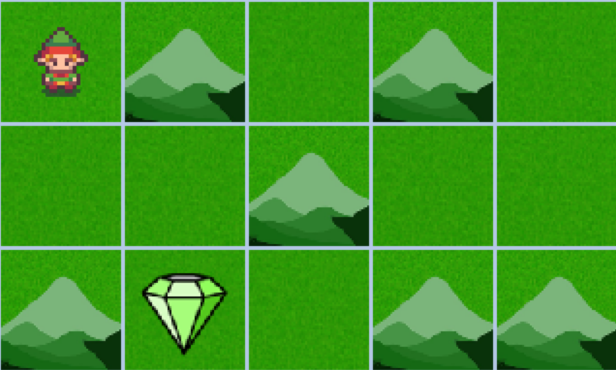Applying double Q-learning
This exercise tasks you with applying the Double Q-learning algorithm in the same custom environment you solved with Expected SARSA to investigate the difference. Double Q-learning, by using two Q-tables, helps reduce the overestimation bias inherent in the traditional Q-learning algorithm and offers more stability in learning than other temporal difference methods. You'll use this method to navigate through the grid environment, aiming for the highest reward while avoiding mountains in order to reach the goal as quickly as possible.

Este ejercicio forma parte del curso
Reinforcement Learning with Gymnasium in Python
Instrucciones del ejercicio
- Update the Q-tables using the
update_q_tables()function you coded in the previous exercise. - Combine the Q-tables by summing them.
Ejercicio interactivo práctico
Prueba este ejercicio y completa el código de muestra.
Q = [np.zeros((num_states, num_actions))] * 2
for episode in range(num_episodes):
state, info = env.reset()
terminated = False
while not terminated:
action = np.random.choice(num_actions)
next_state, reward, terminated, truncated, info = env.step(action)
# Update the Q-tables
____
state = next_state
# Combine the learned Q-tables
Q = ____
policy = {state: np.argmax(Q[state]) for state in range(num_states)}
render_policy(policy)